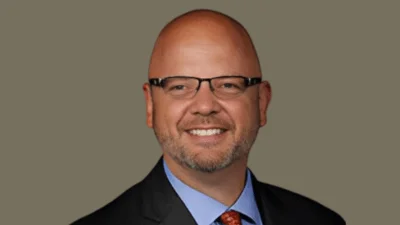Workers’ compensation costs are driving lllinois manufacturing and transportation jobs into Indiana, the Illinois Policy Institute reported recently.
A State of Oregon ranking of premium index rates for workers’ compensation insurance in 2016 puts Illinois at the highest among 13 states in the region, more than double the rate in Indiana. Whereas an employer in Illinois pays approximately $12 for workers’ compensation for every $100 of payroll, that same employer in Indiana would pay just $4.32 -- a 176 percent difference. Illinois is 60 percent more expensive in terms of workers’ compensation than the study average state.
Austin Berg, who wrote the institute's report, spoke to a manufacturing operator in Ford Heights, Illinois, who runs a local Trialco facility with 60 workers. The plant produces alloys to supply other manufacturers in a market that has seen strong demand lately. Jay Armstrong, who runs the facility, said that despite the business doing well, the environment in Illinois might lead Trialco to move the Ford Heights facility.
“We are ready to do an expansion,” Armstrong said. “But our owner is questioning us: How could we expand in the state of Illinois when it would be about $400,000 to $500,000 cheaper per year to move to Indiana?”
Berg proposes reining in the workers’ compensation system with a series of reforms to make the system less attractive to auxiliary figures, like lawyers and doctors, while maintaining its services to workers.
He suggests reducing the state’s wage replacement rates to bring them more in line with the national average. The rates determine how much money injured workers receive. In Illinois, the rates are among the country’s highest and prompt lawyers to pursue cases and create a legal industry around workers’ compensation, Berg said.
Berg also points to issues on the medical side of the workers’ compensation system. He advocates tying the system’s medical fees to Medicare, instead of independently established schedules that include large markups. Tying the fees to Medicare would align Illinois with the majority of states and help remove extreme markups, like surgeries that are three times more expensive under workers’ compensation than Medicare.
Further, Berg proposes removing provisions that allow doctors to sell painkillers to injured workers from their offices, which Berg says has led to markups workers being off the job for 85 percent longer than elsewhere.
Berg also wants to provide workers with incentive to get back to work. He notes that under the current system, some workers actually receive more money for not working, encouraging them to pursue the highest compensation and the longest duration possible.
While the General Assembly put some workers’ compensation reforms in place in 2011, those measures have had little to no practical impact on Illinois workers and businesses, Berg wrote. Illinois’ manufacturing and transportation industries have been particularly hard hit by workers’ compensation costs, and the state’s manufacturing recovery is the most sluggish in the region.
Berg points to an expansion of Hoist Liftruck Manufacturing LLC, which recently opened a factory in East Chicago, Indiana, rather than Illinois. The facility employs 300 people, with plans to nearly double that.
“Would I go back to Illinois?" Bill Roberts, who moved from Illinois to keep his job. "Nope. I like it here. I really do. I should have moved here 30 years ago. I probably would be a rich man now.”
.jpg)





 Alerts Sign-up
Alerts Sign-up